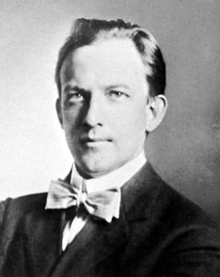
An orchestra is a large instrumental ensemble typical of classical music, which combines instruments from different families. There are typically four main sections of instruments:

Jean Sibelius was a Finnish composer of the late Romantic and early-modern periods. He is widely regarded as his country's greatest composer, and his music is often credited with having helped Finland develop a stronger national identity when his country was struggling from several attempts at Russification in the late 19th century.
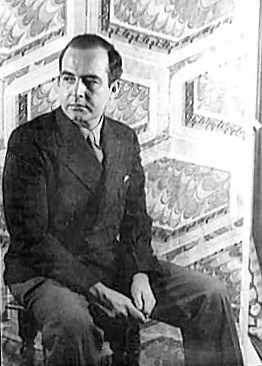
Samuel Osmond Barber II was an American composer, pianist, conductor, baritone, and music educator, and one of the most celebrated composers of the mid-20th century. Principally influenced by nine years' composition studies with Rosario Scalero at the Curtis Institute and more than 25 years' study with his uncle, the composer Sidney Homer, Barber's music usually eschewed the experimental trends of musical modernism in favor of traditional 19th-century harmonic language and formal structure embracing lyricism and emotional expression. However, he adopted elements of modernism after 1940 in some of his compositions, such as an increased use of dissonance and chromaticism in the Cello Concerto (1945) and Medea's Dance of Vengeance (1955); and the use of tonal ambiguity and a narrow use of serialism in his Piano Sonata (1949), Prayers of Kierkegaard (1954), and Nocturne (1959).
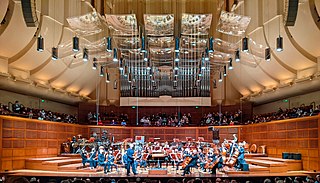
The San Francisco Symphony, founded in 1911, is an American orchestra based in San Francisco, California. Since 1980 the orchestra has been resident at the Louise M. Davies Symphony Hall in the city's Hayes Valley neighborhood. The San Francisco Symphony Youth Orchestra and the San Francisco Symphony Chorus (1972) are part of the organization. Michael Tilson Thomas became the orchestra's music director in 1995, and concluded his tenure in 2020 when Esa-Pekka Salonen took over the position.

Sir Henry Joseph Wood was an English conductor best known for his association with London's annual series of promenade concerts, known as the Proms. He conducted them for nearly half a century, introducing hundreds of new works to British audiences. After his death, the concerts were officially renamed in his honour as the "Henry Wood Promenade Concerts", although they continued to be generally referred to as "the Proms".

Sir Edward German was an English musician and composer of Welsh descent, best remembered for his extensive output of incidental music for the stage and as a successor to Arthur Sullivan in the field of English comic opera. Some of his light operas, especially Merrie England, are still performed.

Sir Granville Ransome Bantock was a British composer of classical music.

Joseph Joachim Raff was a German-Swiss composer, pedagogue and pianist.
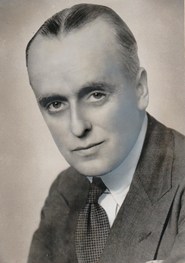
Eric Francis Harrison Coates was an English composer of light music and, early in his career, a leading violist.

Albert Charles Paul Marie Roussel was a French composer. He spent seven years as a midshipman, turned to music as an adult, and became one of the most prominent French composers of the interwar period. His early works were strongly influenced by the Impressionism of Debussy and Ravel, while he later turned toward neoclassicism.
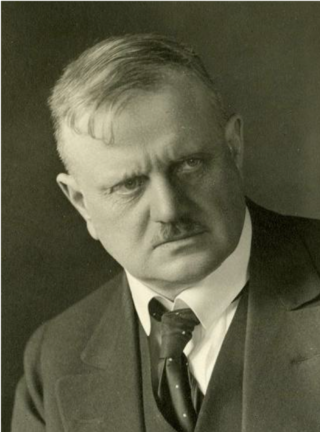
The Oceanides, Op. 73, is a single-movement tone poem for orchestra written from 1913 to 1914 by the Finnish composer Jean Sibelius. The piece, which refers to the nymphs in Greek mythology who inhabited the Mediterranean Sea, premiered on 4 June 1914 at the Norfolk Music Festival in Connecticut with Sibelius conducting. Praised upon its premiere as "the finest evocation of the sea ... ever ... produced in music", the tone poem, in D major, consists of two subjects, said to represent the playful activity of the nymphs and the majesty of the ocean, respectively. Sibelius gradually develops this material over three informal stages: first, a placid ocean; second, a gathering storm; and third, a thunderous wave-crash climax. As the tempest subsides, a final chord sounds, symbolizing the mighty power and limitless expanse of the sea.

Walter Kaufmann was a composer, conductor, ethnomusicologist, librettist and educator. Born in Karlsbad, Bohemia, he trained in Prague and Berlin before fleeing the Nazi persecution of Jews to work in Bombay until Indian Independence. He then moved to London and Canada before settling in the USA as a professor of musicology at Indiana University, Bloomington, Indiana in 1957. In 1964, he became a naturalized U.S. citizen.
Árpád Joó was a Hungarian American conductor and concert pianist.
Mortimer Wilson was an American composer of classical music. He also scored several musical and dramatic films in the 1920s.
George Frederick McKay was a prolific modern American composer.

Henry Kimball Hadley was an American composer and conductor.
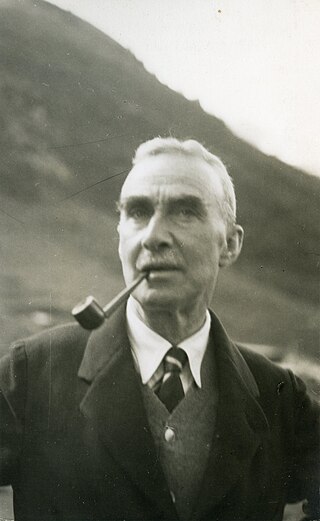
Cyril Bradley Rootham was an English composer, educator and organist. His work at Cambridge University made him an influential figure in English music life. A Fellow of St John's College, where he was also organist, Rootham ran the Cambridge University Musical Society, whose innovative concert programming helped form English musical tastes of the time. One of his students was the younger composer Arthur Bliss, who valued his tuition in orchestration. Rootham's own compositions include two symphonies and several smaller orchestral pieces, an opera, chamber music, and many choral settings. Among his solo songs are some settings of verses by Siegfried Sassoon which were made in co-operation with the poet.
John McLaughlin Williams is a Grammy award-winning American orchestral conductor and violinist.
Pyotr Ilyich Tchaikovsky composed his Orchestral Suite No. 3 in G, Op. 55 in 1884, writing it concurrently with his Concert Fantasia in G, Op. 56, for piano and orchestra. The originally intended opening movement of the suite, Contrastes, instead became the closing movement of the fantasia. Both works were also intended initially as more mainstream compositions than they became; the fantasia was intended as a piano concerto, while the suite was conceived as a symphony.
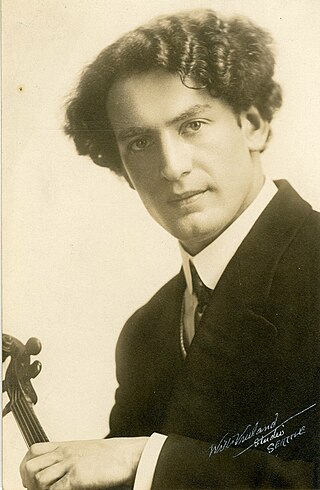
Max Donner was an American violinist, composer, conductor, and teacher of violin, chamber music, and composition.
